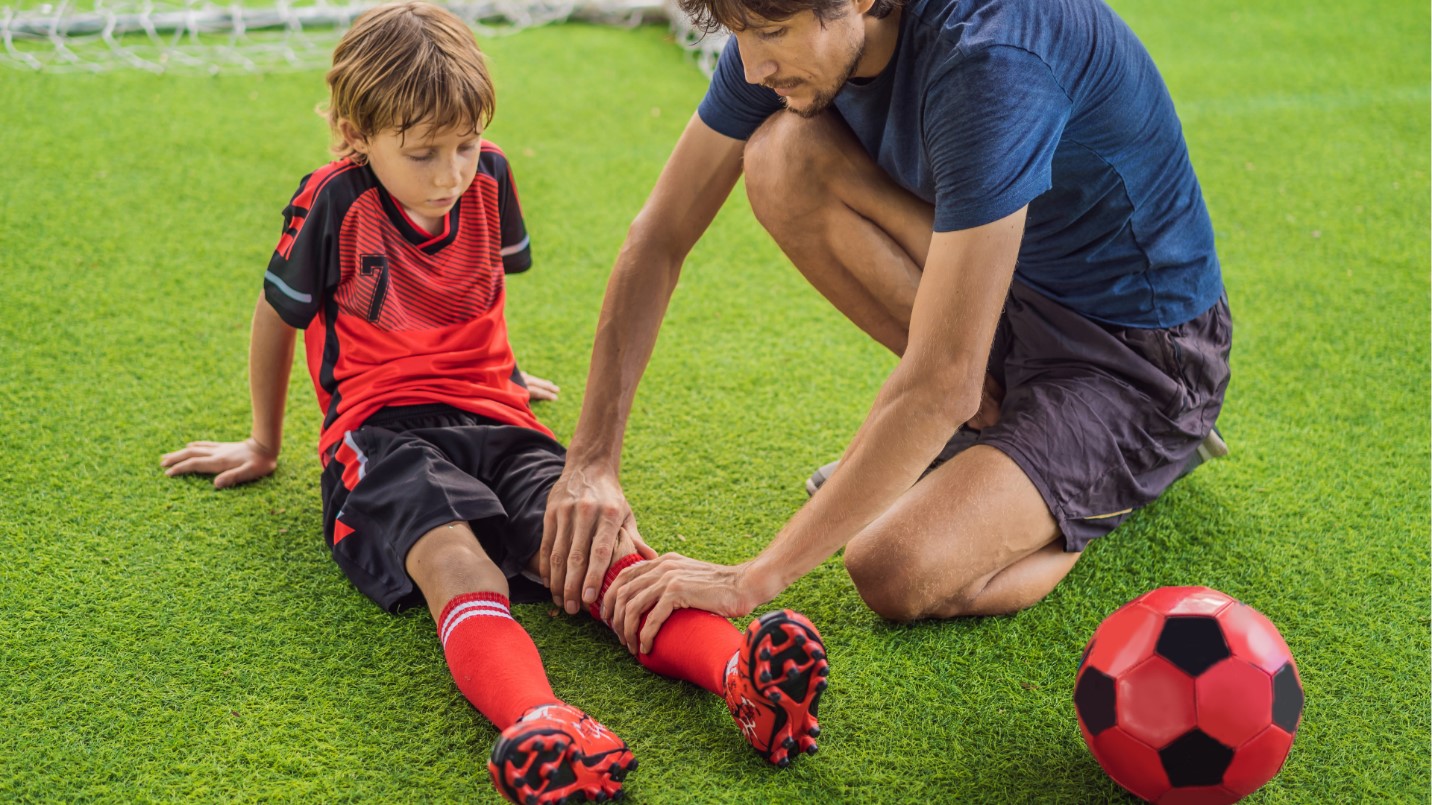
Soccer injuries in children make parents weigh the benefits versus potential injuries. It is a sport beloved by millions worldwide, offering numerous physical and mental benefits for children and adolescents. However, like any physical activity, soccer carries a risk of injury. As a parent, understanding the common injuries associated with soccer and how to prevent them is crucial for ensuring your child’s safety and well-being on the field. Here are five common soccer injuries, their causes, and strategies parents can use to help prevent them.
Sprains and Strains
According to research published in Pediatrics, sprains and strains are among the most prevalent soccer injuries in children and adolescents (Zuckerman et al., 2019). These injuries often occur due to sudden movements, collisions with other players, or overexertion during play. Sprains affect ligaments, while strains involve muscles or tendons. The ankles and knees are particularly vulnerable areas for sprains and strains in soccer players (Children’s Health, n.d.).
To help prevent sprains and strains, parents can encourage their children to engage in proper warm-up and cool-down routines before and after games and practices. Additionally, ensuring that players wear appropriate footwear with proper ankle support can reduce the risk of ankle injuries (Verywell Fit, n.d.).
Concussions
Concussions are another common concern in soccer, especially among young players. Head injuries can occur from collisions with other players, the ball, or the ground. While soccer is not a contact sport like football, heading the ball and unintentional collisions can still lead to concussions (Children’s Health, n.d.).
Parents should educate their children about the importance of reporting any symptoms of a concussion, such as headache, dizziness, nausea, or confusion, to their coach or medical professional immediately. Coaches should enforce rules regarding safe heading techniques and discourage aggressive play that increases the risk of head injuries (Verywell Fit, n.d.).
Overuse Injuries
Overuse injuries, such as shin splints and stress fractures, can develop over time due to repetitive motions and inadequate rest. Young soccer players may experience overuse injuries from excessive training, improper technique, or playing on hard surfaces (Verywell Fit, n.d.).
To prevent overuse injuries, parents should monitor their child’s training workload and encourage periods of rest and recovery. It’s essential to prioritize quality over quantity in training sessions and ensure that young athletes have proper form and technique to reduce strain on their bodies.
ACL Tears
Anterior cruciate ligament (ACL) tears are a significant concern, particularly among adolescent female soccer players. The ACL stabilizes the knee joint, and tears can occur from sudden stops, changes in direction, or awkward landings (Children’s Health, n.d.).
Parents can help reduce the risk of ACL tears by encouraging their children to participate in strength and conditioning programs that focus on building lower body strength and improving balance and proprioception. Emphasizing proper jumping and landing techniques during training can also help mitigate the risk of ACL injuries (Verywell Fit, n.d.).
Ankle Injuries
Ankle injuries, including sprains and fractures, are prevalent in soccer due to the sport’s dynamic nature and frequent changes in direction. Uneven playing surfaces and improper footwear can further increase the risk of ankle injuries.
Parents should ensure that their child wears well-fitted cleats designed for soccer and consider ankle braces for additional support, especially if the player has a history of ankle issues. Encouraging players to practice balance and stability exercises can also help strengthen the ankle muscles and reduce the risk of injury.
In conclusion, while soccer offers numerous benefits for children and adolescents, it’s essential for parents to be aware of the common injuries associated with the sport and take proactive measures to prevent them. By promoting proper training techniques, encouraging rest and recovery, and ensuring that players have the appropriate equipment, parents can help reduce the risk of soccer-related injuries and ensure a safer and more enjoyable experience for their children on the field.
When to Go to the ER
Our facility has 24/7 imaging and labs and can treat your child quickly and relieve pain symptoms. Our Board-Certified Emergency Physicians and Pediatric Suite add to a level of comfort for your child. If therapy or continued care is needed, we’ll make sure your emergency records are transferred to your doctor. We deliver seamless convenience in a world-class medical facility.
Works Cited
Children’s Health. “Common Soccer Injuries and How to Prevent Them.” Children’s Health. Accessed 28 Feb. 2024, https://www.childrens.com/health-wellness/common-soccer-injuries-and-how-to-prevent-them.
Zuckerman, Scott L., et al. “Soccer Injuries in Children and Adolescents.” Pediatrics, vol. 144, no. 5, 2019, e20192759. AAP Journals, https://publications.aap.org/pediatrics/article/144/5/e20192759/38190/Soccer-Injuries-in-Children-and-Adolescents.
Verywell Fit. “Common Soccer Injuries and How to Prevent Them.” Verywell Fit. Accessed 28 Feb. 2024, https://www.verywellfit.com/common-soccer-injuries-3120651.
